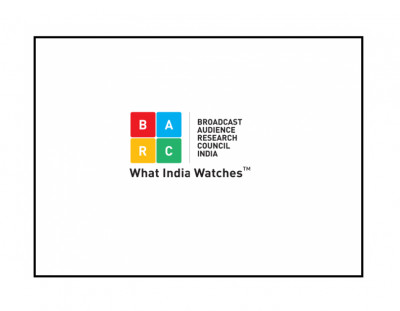India’s TV owning households up 6.9% at 210 mn; TV viewing individuals at 892 mn: BARC
Home to over 1.3 billion people across 300 million households, India’s television viewing universe continues to grow. BARC India, along with the BARC Technical Committee (TechComm), has released the ‘TV Universe Estimates 2020’ (TV UEs) report. The last update of TV UEs was done in 2018 after the establishment study, known as Broadcast India (BI) 2018. While there were plans to conduct BI 2019 and BI 2020 surveys, at the advice of the industry, BI 2019 was not conducted due to NTO, and subsequently, due to COVID-19 nationwide lockdowns, fieldwork could not be conducted for BI 2020.
Also read: IPL-13 viewership up 23% compared to IPL-12; total viewing minutes at 400 bn: BARC
In the absence of field work, BARC India team, along with the BARC Technical Committee (TechComm), has evaluated multiple options and identified the best and the most suitable method for updating TV UEs. Based on the recommendations, it was decided to keep projection date as March 1, 2020 for TV HH and individuals.
According to BARC India’s TV UEs 2020, 210 million Indian households now own a TV set, an increase of 6.9% from 197 million in 2018. Simultaneously, TV viewing individuals also witnessed an increase of 6.7%, reaching 892 million from 836 million in 2018, an increase of 57 million individuals in 2020. TV Owning Female population grew by 7%, while male population grew by 6%. In terms of age-groups, the highest growth was witnessed in the “kids” category (age 2 to 14) at 9%.
Markets
TV households in Urban markets grew by 4% – from 87.8 million in 2018 to 91 million, while Rural markets have grown by 9%, up from 108.9 million to 119.2 million in 2020. While TV households across India grew by 6.9%, HSM grew by 8%, outpacing All India as well as the South states, which grew by 5%.
NCCS
As the Indian population continues to move up the socio-economic pyramid, changes are also observed in the NCCS profile of TV households. As per the TV UE-2020, the proportion of NCCS A and B has increased to 27% and 31%, respectively, while NCCS DE has further contracted to 9% of TV households in the country.
Genres
When comparing the viewership with old UEs, Genres operating at National and HSM level have shown a higher growth with few genres, such as Hindi News, Sports, English Movies and Devotional/ Spiritual, showing a double-digit growth.
On presenting the updated TV Universe Estimates for broadcasters, advertisers, agencies and other industry stakeholders, Sunil Lulla, Chief Executive Officer, BARC India, said, “As a body that is deeply rooted in data science, BARC India is committed to providing its stakeholders with a true representation of the television universe. We are happy we have been able to ascertain that television continues to be the screen of choice for Indians. With an additional 13 million TV households and an opportunity for another 90 million households that are yet to own a TV set, India’s broadcast ecosystem continues to have a significant potential for growth in the years to come.”
Adding to this, Dr Derrick Gray, Chief of Measurement Science & Business Analytics, BARC India, said, “At BARC India, we are deeply invested in providing data that is statistically accurate by factoring in changes in the various ‘control and weighting variables’ that are shown to be highly associated with television viewing. The updated Universe Estimates, UE 2020 aptly sums up India’s linear TV ecosystem and highlights that TV owning households continue to grow. Given the global pandemic scenario, the updated estimate is robust and is developed with the help of data and findings based from various previously validated field studies. We are certain that these estimates will help the industry to a great extent. We will continue to provide the industry with a currency that is reliable and of global standards. I would like to thank the TechComm on behalf of all of us for all their support and contributions in formalising the UE 2020.”
TV UE 2020 has been developed by computing the linear growth of TV Households and TV Individuals from Broadcast India (BI) Studies conducted in 2016 and 2018 at geographic and demographic levels. The distribution of the TV population by NCCS was taken from the most recent Indian Readership Survey (IRS). BARC India will implement the findings from the TV Universe Estimates 2020 for its data starting Week 14, 2021, which will release on April 16, 2021. The updated estimates will reflect for BARC India subscribers in the YUMI Analytics platform with immediate effect.




Share
Facebook
YouTube
Tweet
Twitter
LinkedIn